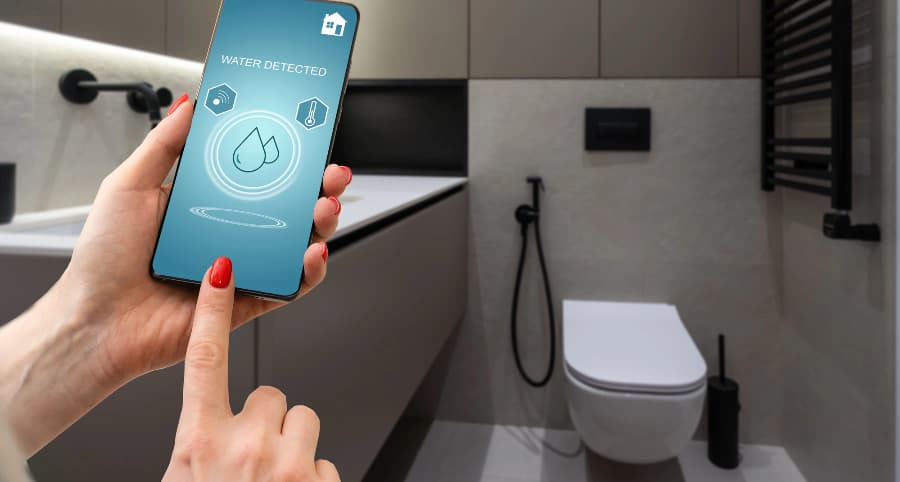How does a water sensor work and why install one with your Cedar Rapids smart home?

One minor leak at your property can cause significant issues and thousands of dollars worth of damage. You need to defend against this threat; luckily, there’s an easy way to accomplish this. A water sensor is a simple, effective, and affordable solution. Learn how they work and why you should incorporate water sensors into your Cedar Rapids smart home.
How water sensors safeguard Cedar Rapids your home
Water penetrates homes in many ways, whether from a plumbing failure, storm-related event, appliance malfunction, or just human error. No matter how it takes place, you need to know immediately, and this is how water sensors help. But how precisely do they work?
Most water sensors are conductive and function with a pair of electrodes. When water infiltrates the area between the electrodes, an electrical circuit is created, setting off your alarm. You’ll also come across capacitive sensors that emit an electrical field. When water contacts the conductive areas of these devices, the field is disrupted, and your alarm activates. Optical sensors employing infrared LED light are another possibility.
Some water sensors give you more
Certain innovative water sensors give you even more protection as they have integrated temperature sensors. This is an excellent tool in preventing frozen pipes. If there’s an extreme reduction in temperature, you’ll be notified immediately. Taking measures before pipes break will shield you from water damage and costly repairs.
Why incorporate water sensors into your Cedar Rapids smart home?
When water emergencies occur, you have to be alerted right away. You can attain this goal by incorporating water sensors into your smart home. Whether you’re home to hear the alarm or away, you’ll receive an instant alert on your cell phone. In addition, your round-the-clock monitoring specialists will be informed. Each second counts in a water emergency to control the damage and interruption to your life.
Where should you install water sensors?
Any area prone to water infiltration is an appropriate place for water sensors. Think about installing in these areas:
- Bathrooms: Place near bathtubs or at the back of toilets.
- Basements: Water frequently infiltrates basements through damaged walls or due to excess rain or faulty sump pumps.
- Next to water heaters or appliances: Any water-connected appliance might leak at some point.
- Underneath sinks: Water sensors are ideal for detecting plumbing leaks in areas not easy to see.
- Attics: Detect roof leaks promptly and prevent expensive repairs.
Request water sensors with your Vivint smart home
Give your residence the comprehensive protection it requires with innovative devices from Vivint. Our water sensors in Cedar Rapids integrate with your Vivint cell phone app to send you immediate updates when your alarm goes off. You also enjoy built-in temperature sensors to avoid frozen pipes. Learn more about the smart home devices available in Cedar Rapids by calling (319) 419-4827 today.
